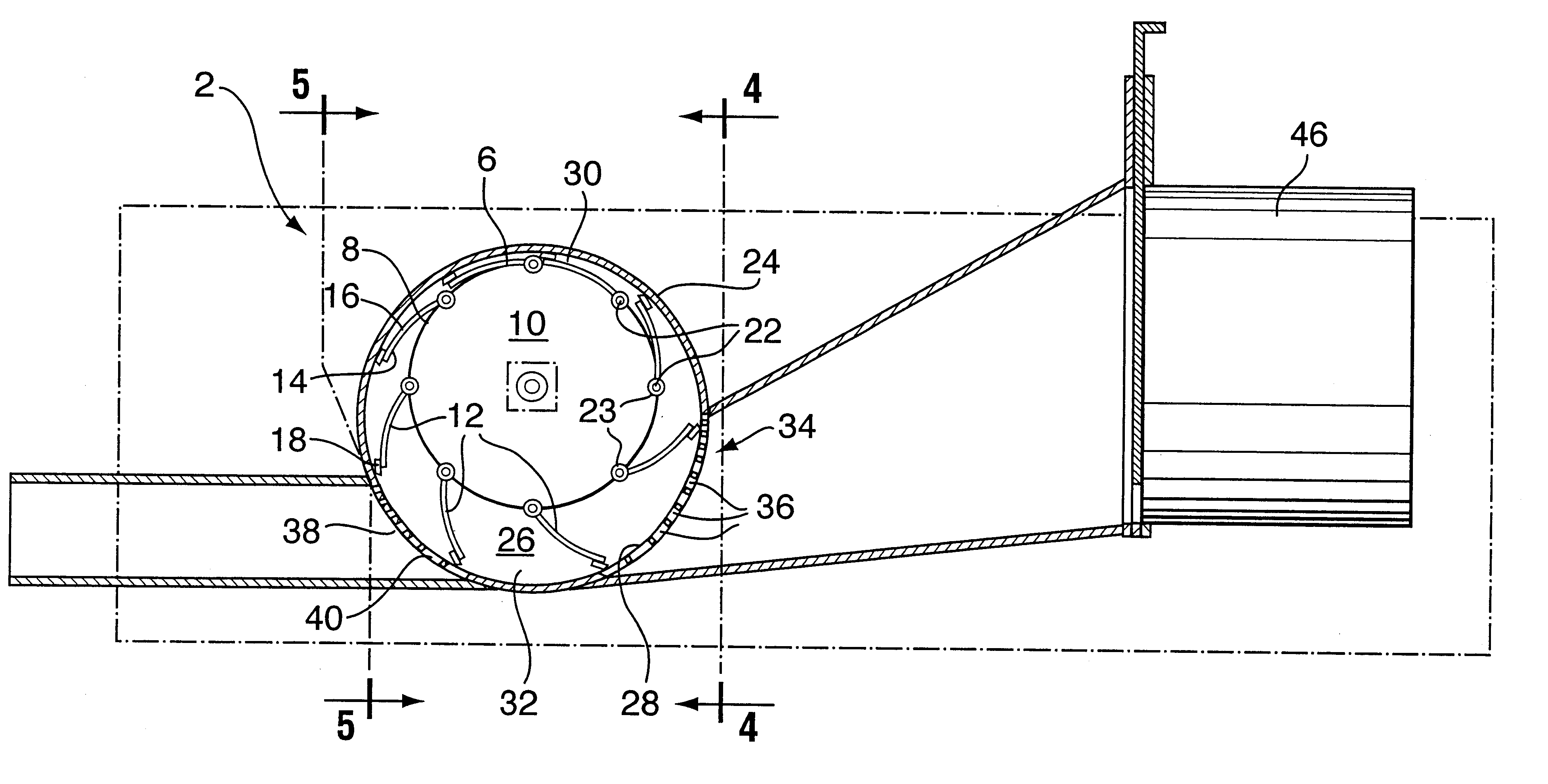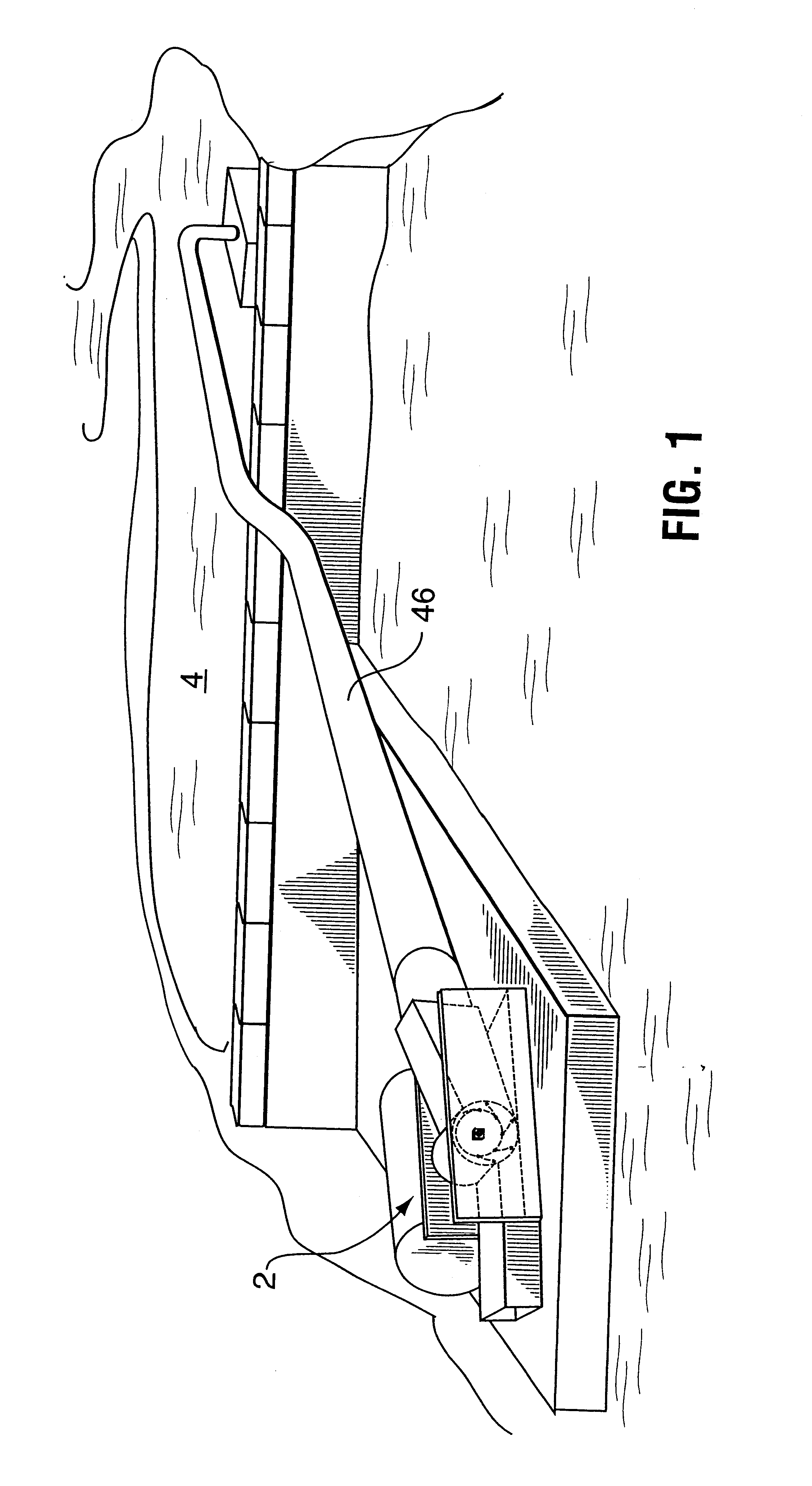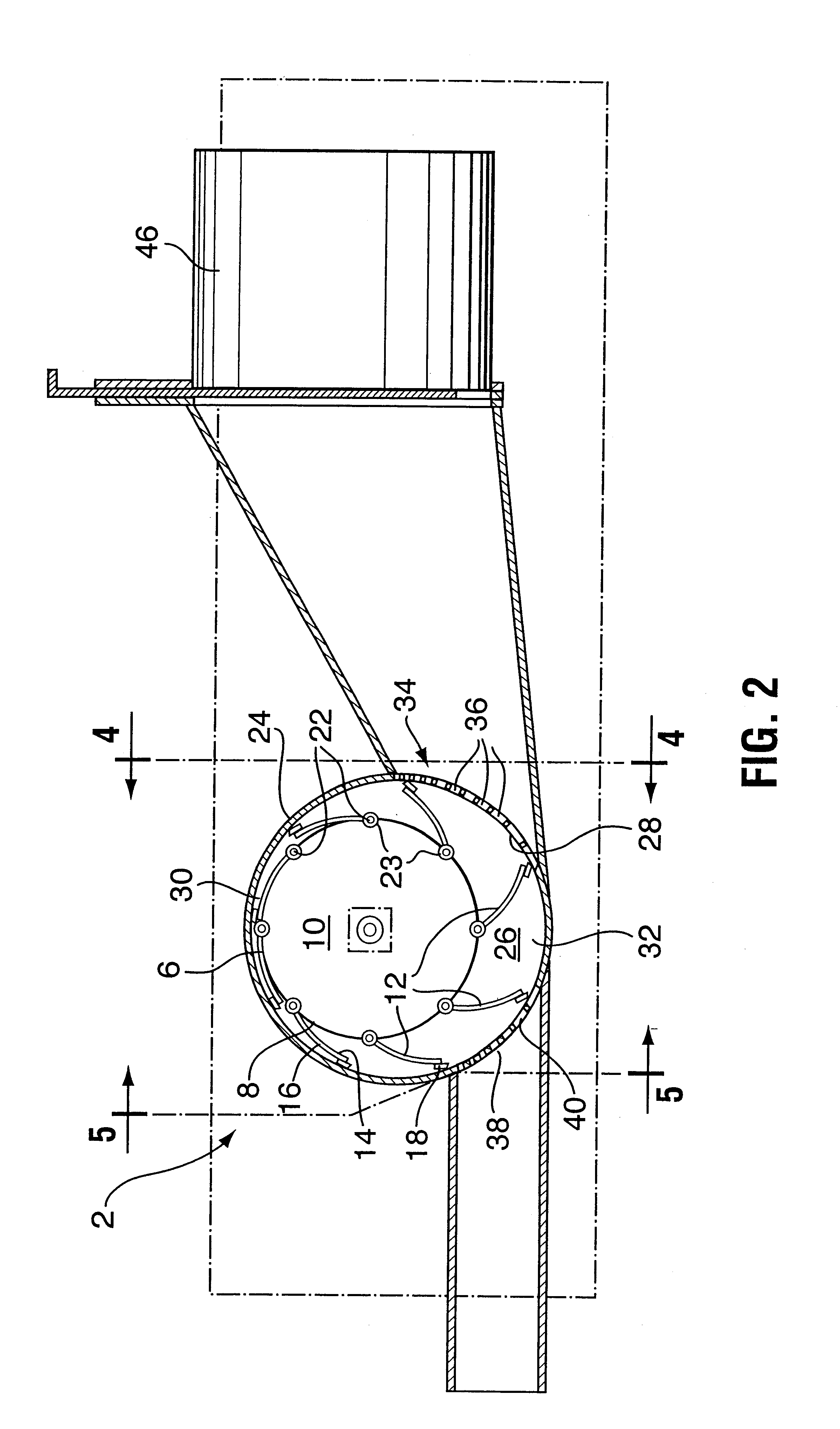Low head water turbine
a low-head water turbine and low-efficiency technology, applied in the direction of rotary piston engines, conventional hydropower generation, tidal stream/damless hydropower, etc., can solve the problems of low-head water turbines, low efficiency, and sections of small rivers having low head or drop
- Summary
- Abstract
- Description
- Claims
- Application Information
AI Technical Summary
Benefits of technology
Problems solved by technology
Method used
Image
Examples
Embodiment Construction
In the following description, similar features in the drawings have been given similar reference numerals.
Turning to FIGS. 1 and 2 there is illustrated a low head turbine (2) according to the present invention receiving water input from a stream (4).
Turbine (2) comprises a runner (6) having a cylindrical outer surface (8) extending between opposite ends (10). A plurality of similarly shaped and sized blades (12), having inner sides (14) and outer sides (16) extending between ends (10) are spaced evenly about the surface (8) of runner (6) as illustrated, and extend between the ends (10) of runner (6). Along the outer side (16) are preferably secured strips (18) of a low friction plastic. The inner sides (14) of blades (12) are pivotally secured at pivots (22) to the outer surface (8) of runner (6), in such a manner that the blades can pivot in the direction of rotation of the runner, between a closed position lying adjacent the outer surface (8) of the runner and an open position at ...
PUM
 Login to View More
Login to View More Abstract
Description
Claims
Application Information
 Login to View More
Login to View More - R&D
- Intellectual Property
- Life Sciences
- Materials
- Tech Scout
- Unparalleled Data Quality
- Higher Quality Content
- 60% Fewer Hallucinations
Browse by: Latest US Patents, China's latest patents, Technical Efficacy Thesaurus, Application Domain, Technology Topic, Popular Technical Reports.
© 2025 PatSnap. All rights reserved.Legal|Privacy policy|Modern Slavery Act Transparency Statement|Sitemap|About US| Contact US: help@patsnap.com



